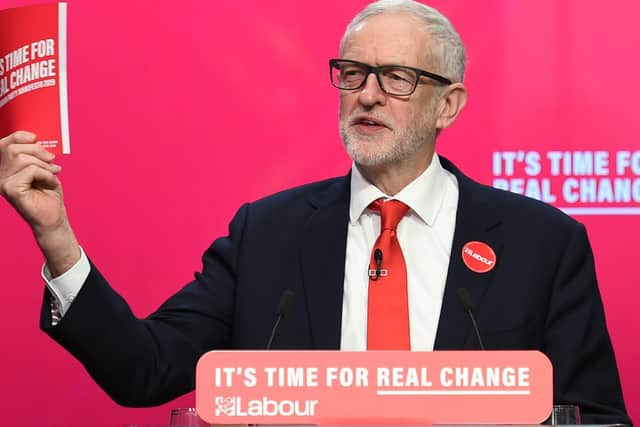Labour and Tories both face challenge in 2020 political landscape


IT’S a new year and there’s a new political landscape facing MPs and MSPs as they return to Westminster and Holyrood today.
Pre-Christmas dreams of a minority UK Labour government dependent on SNP votes, which would have handed Nicola Sturgeon huge influence, evaporated as soon as the general election exit poll was published on December 12.
Advertisement
Hide AdAdvertisement
Hide AdThe SNP’s increased tally of 48 seats allows Ms Sturgeon to renew her demands for a second independence referendum but the party no longer has leverage in the Commons because of Boris Johnson’s 80-strong majority.


Labour’s crushing defeat means Jeremy Corbyn is about to depart the stage. And the party has launched the search for a new leader, with a wide field of potential candidates and a lively debate on the future direction.
Labour lost all but one of its Scottish seats, leaving Edinburgh South’s Ian Murray as the sole Labour MP north of the border - a familiar but still humiliating position for the party which used to dominate Scottish politics.
But arguably even more worrying for Labour and its future was the loss of many seats in the north of England where people would previously never even have considered electing a Tory MP.
Advertisement
Hide AdAdvertisement
Hide AdThe key question is whether the switch of these constituencies in Labour’s traditional heartlands from the red column to the blue is a one-off move in the special circumstances of 2019, where many voters were unimpressed by Mr Corbyn and frustrated by the whole Brexit saga, or whether it represents a more permanent shift.
Many fear Labour’s decline in Scotland - which has seen the SNP in power at Holyrood for the past 12 years and the Tories become the main opposition party - is just such a permanent shift in loyalties, with voters concluding Labour has had its day and the SNP has taken its place as the main left-of-centre political force.
Transferring allegiance from Labour to the Tories looks like a much bigger leap. So has Mr Johnson managed to woo northern voters with his promises of more spending on the police and NHS and his attempts to portray himself as anti-establishment? Or was it simply that voters used to struggling to make ends meet saw Labour’s promises of record spending as not credible, didn’t like Jeremy Corbyn and wanted Brexit over?
With the task of negotiating the UK’s future relationship with the EU still ahead, Brexit is by no means “done” and will not be for some time.
Advertisement
Hide AdAdvertisement
Hide AdBut it is possible that by the time of the next general election in five years’ time it will no longer be the dominant factor in UK politics. With other issues on the agenda and under a different leader, could Labour win back the 2019 defectors in seats like Great Grimsby, Workington and Bishop Auckland?
It’s not just a challenge for Labour. Once Brexit recedes as the all-consuming focus, what does Mr Johnson have to offer these voters? If the Tories want to hold onto the newly-won northern seats they will have to deliver for their new voters.
It was all very well, for example, Mr Johnson announcing during the election campaign that he was postponing the Tories’ planned cut in corporation tax from 19 to 17 per cent - tax cuts for the rich and for big business don’t win votes in working class areas. But will the reduction in corporation tax now be abandoned permanently? And what would higher earners and business people have to say if they were no longer to benefit so much from Tory policies?
Or will the new landscape turn out to be rather similar to the old one?